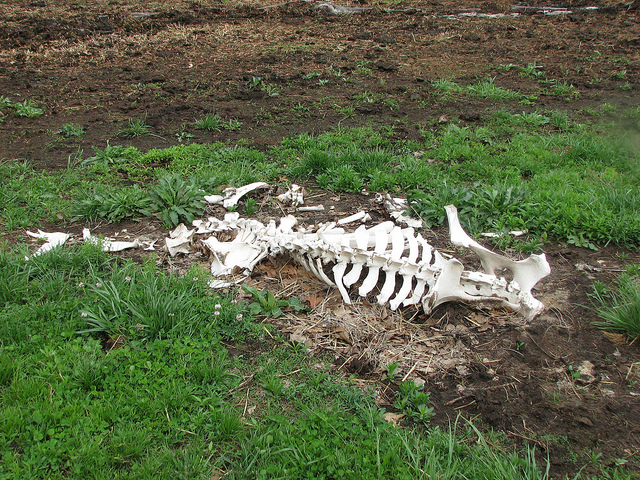- Stay Connected
Ethiopia Looks to Animal Bones to Ensure Food Security

Depending on what source you access, Ethiopia now has the world’s fastest growing economy, or at least ranks somewhere in the top 10.
This rise is in part because of the government’s decision to diversify its largely agrarian economy by boosting its manufacturing, textile and energy-generation sectors. But this country of 96.5 million is still one of Africa’s poorest nations, with per-capita income only hovering around $550. About a third of all Ethiopians live under the government’s poverty line of 60 cents a day.
Growing crops such as teff, maize, barley and wheat allows most Ethiopians to get by, but there is one huge problem: Much of Ethiopia’s land is highly acidic and lacks phosphorus. The need to import and then transport fertilizer is a massive problem as its cost to Ethiopian farmers ranks amongst the highest on the planet.
The encouraging news for Ethiopia is that a bevy of nonprofits and companies are striving to boost Ethiopian yields. Self Help Africa, for example, is one NGO that works with farmers to instill more efficient techniques from seed generation to more sustainable land stewardship. Companies including PepsiCo have invested in developing crops such as chickpeas that can be exported while nourishing the soil.
But the risks of climate change are a cloud that hangs over Ethiopia’s future. Access to quality seeds is often a setback to growing resilient crops, and the country’s barren soil still presents a stubborn hurdle too difficult for many farmers to overcome. But a partnership between the U.S. embassy in Addis Ababa, Cornell University, and Jimma University in the southwestern region of Ethiopia could help boost farm production thanks to the reuse of a form of waste ubiquitous across the country.
As outlined in detail by science journalist Virginia Gewin, Ethiopia has one resource it has not tapped: animal bones. More than 100 million cows, sheep and goats roam across Ethiopia’s countryside and towns, and their numbers are increasing by approximately 3 percent annually. Five years ago, the U.S. Embassy awarded a grant to Cornell and Jimma researchers to find a solution for Ethiopia’s depleted and acidic soil, and the link between all those bones and a potential answer for revolutionizing the country’s farming sector was made.
The statistics are a bit grisly — one study suggests that Ethiopia’s annual animal bone waste adds up to approximately 300,000 tons. But get past the visual, and all of those ribs, vertebrae and femurs could generate over 36,000 tons of phosphorus a year. That would allow Ethiopia to produce up to 58 percent of its phosphorus fertilizer requirements, eliminating the need to spend over $100 million in such imports. Much of the world’s phosphorus comes from Morocco and other North African countries, so instability in that region could already cause prices to spike similarly to the exponential rate at which they rose in 2008.
As Gewin explained, the first riddle was to find a way to process all those bones. Researchers eventually arrived at a process that involved the churning of sugars, cornstarch and water blended with powdered bone until it turned into small pellets. The next challenge, which is always a problem when manufacturing a “sustainable product,” was to ensure that they could procure a reliable supply of raw materials. That became an easy task as efforts to collect bones were so successful that researchers had to slash the buying price of bones in half. Nevertheless, bone collectors who scoured through restaurants, municipal dumps and even city streets saw their daily incomes double.
If this new source of fertilizer, currently test marketed as “Abyssinia Phosphorus,” can continue to scale and prove to be cost-effective, the benefits could soar far beyond Ethiopia’s borders. Agronomists and researchers in other countries dedicated to their countries’ long-term food security could very well find an answer in their own backyard, while reducing exports and building economic opportunities for citizens.
